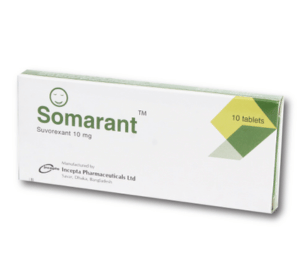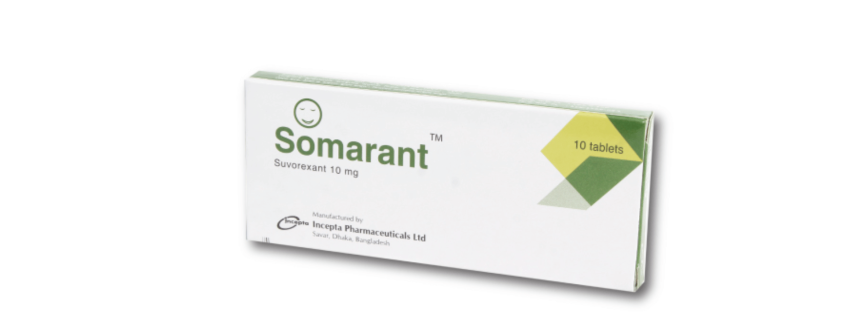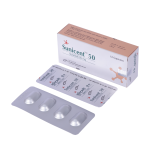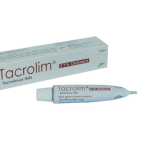Somarant(Suvorexant)

Therapeutic Group: Drugs of Nervous System
Presentation
Somarant tablet: Each tablet contains Suvorexant INN 10 mg.
Description
Suvorexant a highly selective antagonist for orexin receptors OX1R and OX2R. The mechanism by which Suvorexant exerts its therapeutic effect in insomnia is presumed to be through antagonism of orexin receptors. The orexin neuropeptide signaling system is a central promoter of wakefulness. Blocking the binding of wake-promoting neuropeptides orexin A and orexin B to receptors OX1R and OX2R is thought to suppress wake drive.
Indications
Somarant is indicated for the treatment of insomnia, characterized by difficulties with sleep onset and/or sleep maintenance.
Dosage & Administration
Use the lowest dose effective for the patient .
Recommended dose is 10 mg, no more than once per nighttaken before 30 minutes of going to bed, with at least 7 hours remaining before the planned time of awakening. If the 10 mg dose is well-tolerated but not effective, the dose can be increased, not to exceed 20 mg once daily.
Time to effect may be delayed if taken with or soon after a meal.
Side Effects
sleepiness during the day
– not thinking clearly
– act strangely, confused, or upset
– sleep-walking
Precautions
Daytime somnolence: Risk of impaired alertness and motor coordination, including impaired driving; risk increases with dose; caution patients taking 20 mg against next-day driving and other activities requiring complete mental alertness.
Need to evaluate for co-morbid diagnoses: Reevaluate if insomnia persists after 7 to 10 days of treatment.
Use in Pregnancy & Lactation
Pregnancy Category C
There are no adequate and well-controlled studies in pregnant women. Somarant should be used during pregnancy only if the potential benefit justifies the potential risk to the fetus.
Drug Interaction
CNS-Active Drugs
An additive effect on psychomotor performance was observed when a single dose of 40 mg of Suvorexant was co-administered with a single dose of 0.7 g/kg alcohol. Suvorexant did not affect alcohol concentrations and alcohol did not affect Suvorexant concentrations.
Effects of Other Drugs on Suvorexant
Strong (e.g., ketoconazole or itraconazole) and moderate (e.g., diltiazem) CYP3A inhibitors significantly increased Suvorexant exposure. Strong CYP3A inducers (e.g., rifampin) substantially decreased Suvorexant exposure.
Effects of Suvorexant on Other Drugs
Suvorexant is unlikely to cause clinically significant inhibition of human CYP1A2, CYP2B6, CYP2C8, CYP2C9, CYP2C19 or CYP2D6. Chronic administration of Suvorexant is unlikely to induce the metabolism of drugs metabolized by major CYP isoforms.
Over Dose
In pharmacological studies, healthy subjects who were administered morning doses of up to 240 mg of Suvorexant showed dose-dependent increases in the frequency and duration of somnolence.
General symptomatic and supportive measures should be used, along with immediate gastric lavage where appropriate. Intravenous fluids should be administered as needed. As Suvorexant is highly protein-bound, hemodialysis is not expected to contribute to elimination of Suvorexant.
Storage
Store in a cool place (in room temperature, below 30°C)
Commercial Pack
Somarant 10mg tablet: Each box contains 1 blister of 10 tablets.



